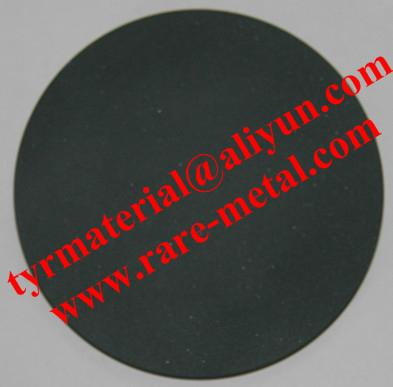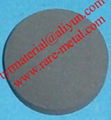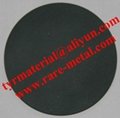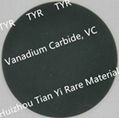
Hafnium Carbide HfC sputtering targets use in thin film caoting CAS:12069-85-1
Brand Name︰
TYR
Country of Origin︰
China
Unit Price︰
US $ 200 / pc
Minimum Order︰
1 pc
Product Description
Hafnium carbide (HfC) sputtering targets
Purity: 99.5%
Sputtering Targets : Diameter: 355.6mm (14") max.
Single piece Size: Length: <254mm, Width: <127mm, Thickness: >1mm,
if larger size than this, we can do it as Tiles joint by 45 degree or 90 degree
Density: 12.2g/cm3, Melting Point: 3890oC, black odorless powder, Insoluble in water, cubic crystallography, Boiling Point: 4693oC
Applications:
Hafnium carbide, HfC is used in hard coatings, often applied by processes such as plasma spraying,
Hafnium carbide (HfC) is a chemical compound of hafnium and carbon. With a melting point of about 3900 oC, it is one of the most refractory binary compounds known. However, it has a low oxidation resistance, with the oxidation starting at temperatures as low as 430 °C.
Hafnium carbide is usually carbon deficient and therefore its composition is often expressed as HfCx (x = 0.5 to 1.0). It has a cubic (rock-salt) crystal structure at any value of x.
Hafnium carbide powder is obtained by the reduction of hafnium(IV) oxide with carbon at 1800 to 2000 °C. A long processing time is required to remove all oxygen. Alternatively, high-purity HfC coatings can be obtained by chemical vapor deposition from a gas mixture of methane, hydrogen, and vaporized hafnium(IV) chloride. Because of the technical complexity and high cost of the synthesis, HfC has a very limited use, despite its favorable properties such as high hardness (>9 Mohs) and melting point.
Hafnium carbide powder was synthesized by sol–gel polycondensation of hafnium chloride with citric acid. The starting materials were dissolved in water and mixed homogeneously on a hot plate until precursor gel was formed. Pyrolysis of this gel resulted in monoclinic hafnia which after subsequent heat treatment transformed into hafnium carbide. The obtained materials were analyzed by means of X-ray diffraction and scanning electron microscopy. The results showed that the obtained carbide powders were composed of nearly equiaxed particles with narrow size distribution. Characterization by nitrogen adsorption showed that the obtained powders were micro- and mesoporous materials with high specific surface area.
We also supply below carbide sputtering targets material:
Chromium Carbide Cr2C3, CrC
Hafnium Carbide HfC
Niobium Carbide NbC
Silicide Carbide SiC
Tantalum Carbide TaC
Titanium Carbide TiC
Tungsten Carbide WC
Vanadium Carbide VC
Zirconium Carbide ZrC
Tantalum Hafnium Carbide Ta4HfC5



